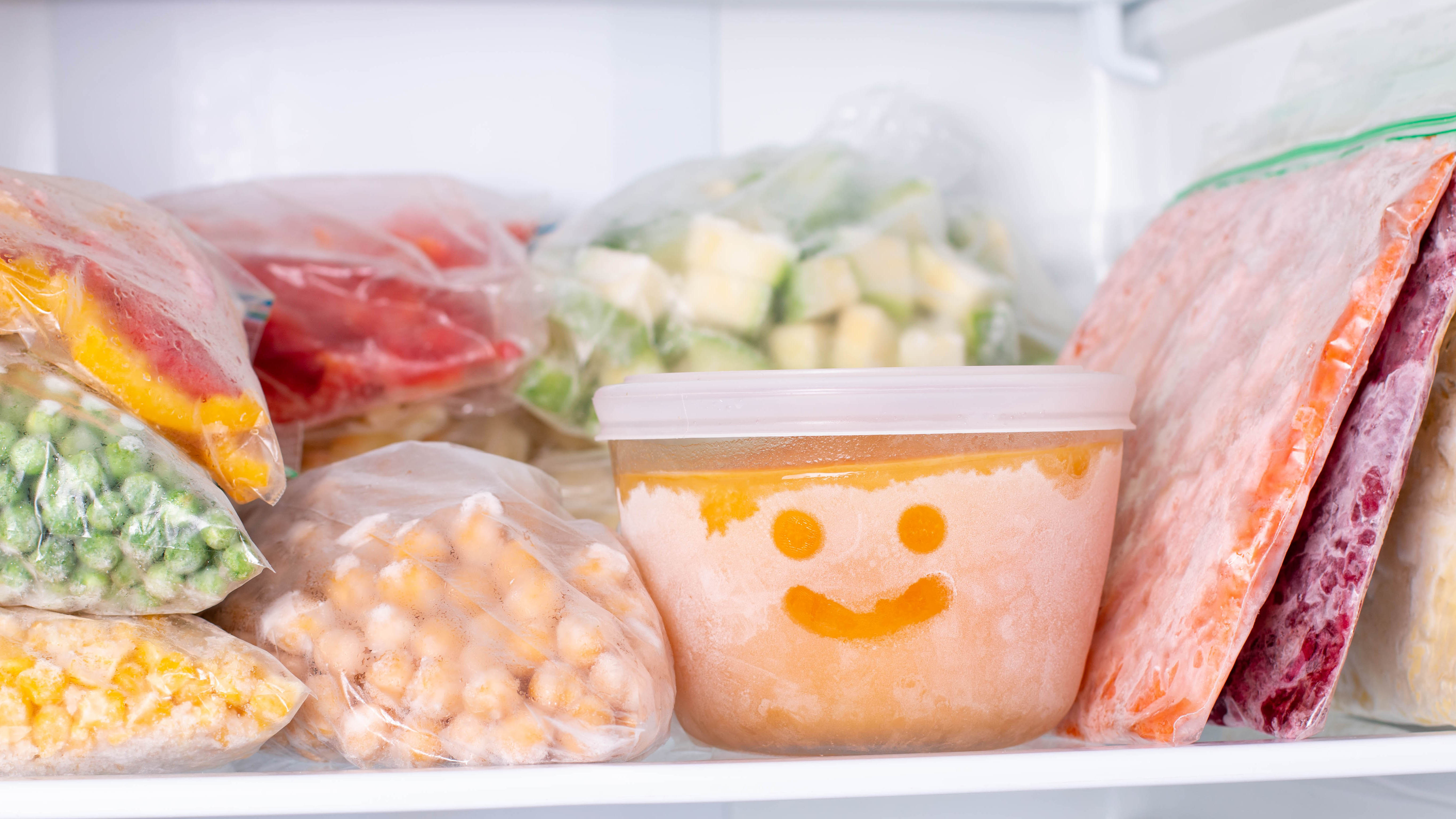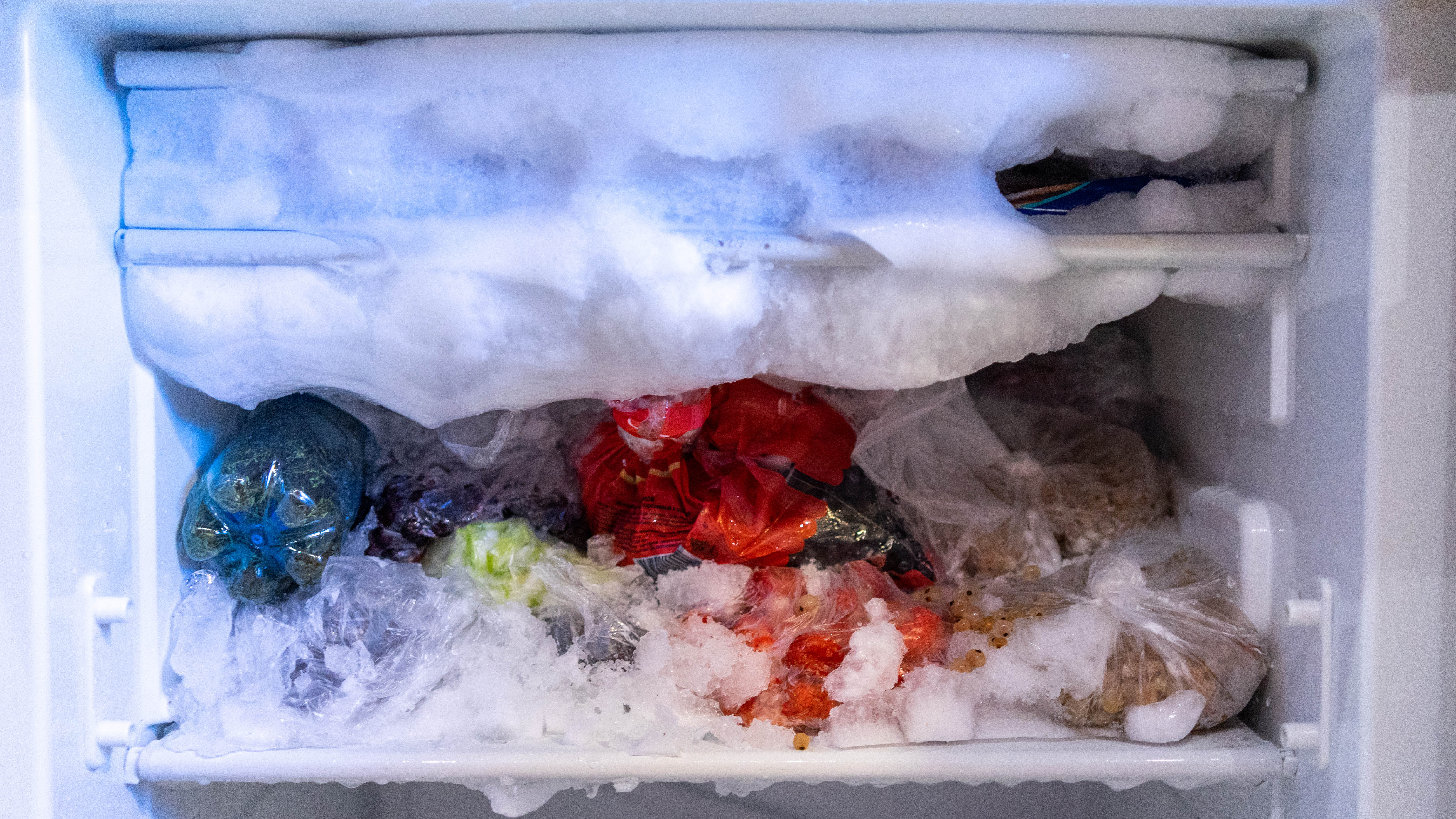How long will food last in your freezer?
When it comes to storing food, nothing is so heavily relied upon as the freezer. And why wouldn’t it be? Simply chuck the items in there, and you’ve technically got an indefinite storage solution — your food will be safe to eat as soon as it’s defrosted. However, while this appliance may seem like it can do no wrong, you should know that the quality of food stored in the freezer will degrade over time, even for the best refrigerators. So, if you’re guilty of leaving forgotten items at the back of the freezer, odds are these won’t taste as good as they once did.
It’s for this reason that you need to keep on top of what you’ve frozen, as well as how long each product will likely last before it starts to spoil. To help you out, we’ve pulled together a grid to break down exactly how long commonly frozen items will last, taking guidance from FoodSafety.gov (opens in new tab), which is provided by government agencies, including the USDA, the FDA and the CDC. We’ve also considered what the manufacturers themselves suggest as well as experts in the field.
Consequently, we’ve covered most things you should find in your freezer. Plus, we will discuss the best freezer storage tips, so you can keep on top of your frozen goods in the future. Here’s how long your food will last in the freezer.

Before we begin, we should stress that the following timelines are based on the items being frozen and maintained at the correct temperature. For a freezer, this is at or below 0°F or -18°C. When stored at this temperature, your food can technically be kept for as long as you like and still be safe to eat, but if you want to keep the flavor, texture and appearance intact, we recommend sticking to the following dates.
How long will food last in the freezer?
| Category | Type | Freezing time |
| Fresh meat | Steak | 4-12 months |
| Row 2 – Cell 0 | Chicken or turkey (whole) | 12 months |
| Row 3 – Cell 0 | Chicken or turkey (cutlets/pieces) | 9 months |
| Row 4 – Cell 0 | Chops | 4-12 months |
| Row 5 – Cell 0 | Bacon | 1 month |
| Row 6 – Cell 0 | Sausage | 1-2 months |
| Row 7 – Cell 0 | Hot dogs | 1-2 months |
| Row 8 – Cell 0 | Hamburger/Ground meat | 3-4 months |
| Row 9 – Cell 0 | Ham (fresh, uncured and uncooked) | 6 months |
| Row 10 – Cell 0 | Ham (fresh, uncured and cooked) | 3-4 months |
| Meat-free alternatives | Tofu | 1 month |
| Row 12 – Cell 0 | Seitan | 6 months |
| Row 13 – Cell 0 | Quorn (cooked) | 1 month |
| Fresh fish | Salmon | 2-3 months |
| Row 15 – Cell 0 | Tuna | 2-3 months |
| Row 16 – Cell 0 | Cod | 6-8 months |
| Row 17 – Cell 0 | Haddock | 6-8 months |
| Row 18 – Cell 0 | Trout | 4-8 months |
| Row 19 – Cell 0 | Crab meat | 2-4 months |
| Row 20 – Cell 0 | Lobster | 2-4 months |
| Row 21 – Cell 0 | Shrimp | 6-18 months |
| Row 22 – Cell 0 | Squid | 6-18 months |
| Row 23 – Cell 0 | Cooked fish | 3 months |
| Dairy | Milk | 6 weeks |
| Row 25 – Cell 0 | Yogurt | 2 months |
| Row 26 – Cell 0 | Cream | 3 months |
| Row 27 – Cell 0 | Butter | 4 months |
| Row 28 – Cell 0 | Ice cream | 3-6 months |
| Bread | Loaf or sliced | 3 months |
| Row 30 – Cell 0 | Dough | 6-12 months |
| Eggs | Egg whites and yolks (raw and blended or separate) | 12 months |
| Row 32 – Cell 0 | Egg whites and yolk (blended and cooked) | 3 months |
| Produce | Fruits and vegetables | 8-12 months |
| Leftovers | Cooked meat | 2-6 months |
| Row 35 – Cell 0 | Pizza | 1-2 months |
| Row 36 – Cell 0 | Chicken nuggets | 1-3 months |
| Stews | Vegetable or meat | 2-3 months |
Freezer storage tips
- Keep it filled — Your freezer will actually run more efficiently at full capacity, so don’t be afraid to fill the space. This will save you energy because the frozen items inside help maintain the temperature whenever you open the door.
- Don’t overload it though — Overfilling the freezer can potentially damage the appliance if you block the air vents. It can also make it more difficult to manage the contents, so more food goes to waste in terms of quality. Here are 3 Reasons why you shouldn’t overfill your freezer for more detail.
- Defrost your freezer when necessary — Unfortunately, some freezers will need defrosting. This is necessary when excess ice builds up on the walls of the freezer, preventing the draws from sliding in and out. It needs addressing because it can affect the performance of your freezer as well as consume additional energy. Here’s how to defrost a freezer for guidance.

- Use the fast freeze setting — If your freezer comes with a fast freeze setting, make sure you’re taking advantage. This essentially drops the internal temperature for a period of time. It’s useful if you’ve suddenly added a load of groceries to the mix.
- Always label your food — Make sure you label anything unclear in the freezer, such as leftover stews and home bakes. That way, you know exactly what it is and when it was frozen.
- Rotate the contents — Make sure the items at the back don’t get forgotten about —every time you fill your freezer, move the items at the back to the front so they get used first. Just make sure you avoid any of these 14 foods you should never put in the freezer.
- Remove packaging where space is tight — If your freezer is low on space, feel free to remove the packaging from your frozen food. You can still label it and keep the packaging outside of the freezer for cooking guidance.
For more tips, tricks, and how-tos, check out our guides on the these 7 refrigerator mistakes you could be making, 11 foods that you should never put in the fridge and how to clean a refrigerator.
For all the latest Technology News Click Here
For the latest news and updates, follow us on Google News.
